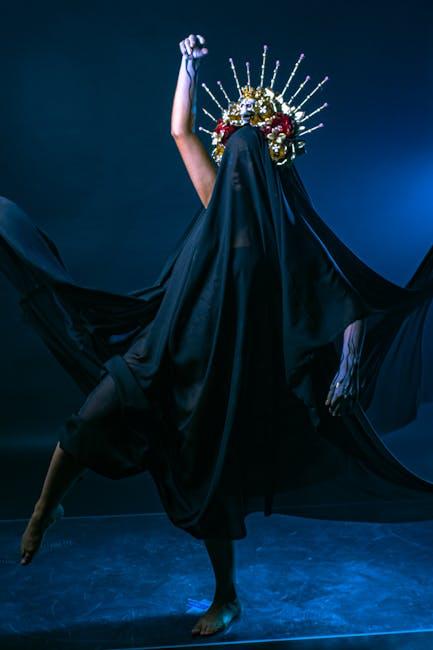In the dim glow of a theater, the silver screen flickers to life, weaving tales that captivate audiences worldwide. Yet, beneath the surface of these cinematic narratives lies a rich tapestry of storytelling techniques that have evolved over time, reshaping how stories are told and experienced. From the silent films of the early 20th century to today’s digital masterpieces, modern cinema has witnessed a profound transformation in its narrative approach. This evolution reflects not only technological advancements but also shifts in cultural sensibilities and audience expectations. Join us as we explore how storytelling techniques in modern cinema have adapted and flourished, crafting narratives that resonate with the hearts and minds of viewers across generations.
The Rise of Nonlinear Narratives and Their Impact on Engagement
In recent years, cinema has seen a transformative shift with the advent of nonlinear narratives, challenging traditional storytelling methods and reshaping audience engagement. Unlike the classic linear structure, nonlinear narratives weave complex timelines and fragmented plots, inviting viewers to piece together the story themselves. This approach can heighten suspense and intrigue, making audiences active participants in the storytelling process.
- Increased Engagement: By requiring viewers to pay closer attention, these narratives foster deeper emotional connections.
- Innovative Storytelling: Filmmakers can explore themes and characters from multiple angles, enriching the narrative depth.
- Memorable Experiences: The unpredictable nature of these stories often leaves a lasting impression, encouraging discussions and repeat viewings.
As nonlinear narratives continue to rise in popularity, they not only redefine how stories are told but also how they are experienced, ensuring that cinema remains a dynamic and evolving art form.
 CGI That Made This Year's Sci-Fi Epic Possible”>Visual Storytelling: Harnessing Technology for Deeper Connections”>
CGI That Made This Year's Sci-Fi Epic Possible”>Visual Storytelling: Harnessing Technology for Deeper Connections”>
Visual Storytelling: Harnessing Technology for Deeper Connections
In today’s cinematic landscape, technology has revolutionized how stories are visually told, creating more immersive and emotionally engaging experiences. Advanced CGI and virtual reality offer filmmakers unprecedented opportunities to craft worlds that feel both fantastical and real. Motion capture technology allows for nuanced performances, bridging the gap between actor and animated character, while drone cinematography provides sweeping, dynamic shots that were once impossible to achieve.
- Interactive Storytelling: Films are increasingly adopting elements of interactivity, allowing audiences to influence the narrative, creating a personalized experience.
- Augmented Reality (AR): Expanding the storytelling canvas beyond the screen, AR brings elements of the film into the real world, enhancing engagement.
- Real-time Rendering: This technology enables filmmakers to visualize and adjust scenes on the fly, facilitating more spontaneous and creative decision-making.
As technology continues to evolve, so too will the methods filmmakers use to connect with audiences on a deeper level, blurring the lines between viewer and participant.

Character Development: Crafting Relatable and Complex Protagonists
In the realm of modern cinema, protagonists are no longer confined to the archetypal molds of the past. Filmmakers today strive to create characters that resonate on a personal level, weaving intricate tapestries of complexity and depth. This shift is achieved through a variety of storytelling techniques that enhance the viewer’s emotional investment and empathy.
- Backstory Integration: Crafting detailed histories allows audiences to understand the motivations and internal conflicts of characters, making them more relatable.
- Flawed Heroes: Emphasizing imperfections and vulnerabilities, these protagonists reflect real human struggles, bridging the gap between fiction and reality.
- Dynamic Growth: Characters are given room to evolve, adapting to challenges and transforming over time, which adds layers to their personality.
Through these methods, modern storytellers create protagonists that are not just seen but truly felt, turning cinema into a mirror reflecting the multifaceted nature of human experience.

The Role of Dialogue in Enhancing Emotional Resonance
In the realm of modern cinema, dialogue has transformed from mere conversation into a powerful tool for conveying deep emotional connections. Filmmakers utilize dialogue not only to advance the plot but to delve into the psyche of their characters, revealing vulnerabilities and motivations. This evolution allows audiences to experience the characters’ emotional journeys on a more intimate level, fostering a profound sense of empathy and connection.
- Subtext and Nuance: Filmmakers craft dialogue rich with subtext, allowing viewers to uncover layers of meaning beyond the spoken words.
- Silence as Dialogue: Strategic use of silence can speak volumes, creating tension and highlighting unspoken emotions.
- Authentic Voice: Characters are given distinct voices, reflecting their backgrounds and personalities, making interactions more believable and relatable.
Through these techniques, dialogue becomes a dynamic element that enhances emotional resonance, making stories more compelling and immersive for audiences worldwide.

